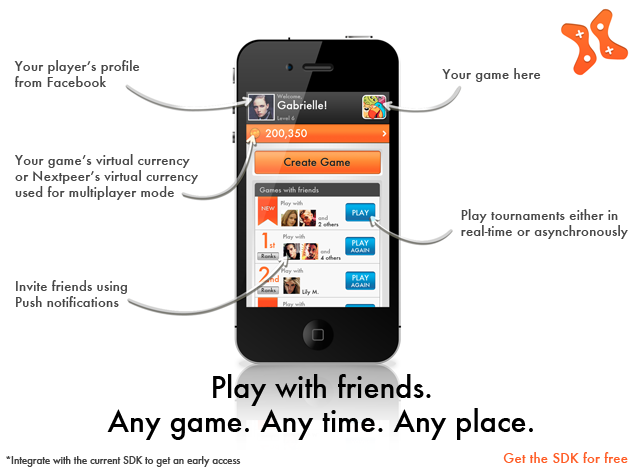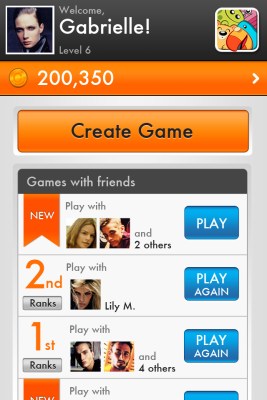There were plenty of other Pictionary-like games in the iTunes app store before OMGPOP’s Draw Something. But the secret ingredient behind Draw Something’s runaway success was its very social, asynchronous gameplay.
Most independent game designers don’t necessarily have the extra manpower to build an engine that supports this. That’s where an Israeli startup called Nextpeer comes in. It’s kind of like the next generation of OpenFeint, a mobile-social gaming network that was acquired by Japanese gaming giant GREE for $104 million last year.
Game designers can integrate Nextpeer’s SDK to let their players compete against each other. Up until now, Nextpeer only supported synchronous gameplay, meaning that players had to be available at the same time. That approach is more challenging because it can be hard to match players at the exact right time.
But now Nextpeer is offering an asynchronous mode, which means that players can finish a round whenever they have a spare moment. That’s the secret sauce that has made games like Zynga’s Words With Friends and then Draw Something insanely viral. In Draw Something, even if you couldn’t compete against a friend at the exact same time, you could see a replay of them guessing your drawing as a recording was played for them. That still created the feeling that you were playing against them in real-time.
Game designers who use Nextpeer can enable the same thing as the company can record one player’s turn and replay it later for a friend or competitor. The company has a few example games out at the moment including Safari Party by PIXOWL, which is a Match-4 game, or PeterPog by GeoloPigs. These titles use Nextpeer to power social tournaments and offer real-time chat.
Since launching at the end of last year, Nextpeer SDK has racked up 20 member apps which collectively have more than 5 million downloads. Its games have 400,000 monthly actives.
This is a start. With asynchronous mode, the company should be able to pick up the pace to compete with far better funded competitors like DeNA’s Mobage platform and GREE’s up coming global gaming network. (But it’s worth noting that GREE’s platform offer features like social leaderboards, not the intensive real-time tournaments that Nextpeer supports.)
Nextpeer will end up having a mixed business model. Part of its revenue will come from a virtual currency that’s layered across all of its games. When players compete in a multiplayer tournament, they put up a little bit of their own virtual currency as a bet. Whoever wins takes the entire pool of coins. If a player runs out of coins, they can always buy more. Nextpeer splits the revenues with the developer after the platform’s take and they haven’t disclosed the share. On Android, this currency will be usable across all games. On iOS, it will only be usable in the game that you bought it from to be compliant with Apple’s rules.
Nextpeer also plans to earn revenue from promoting and distributing games in its network. The company has raised an angel round of undisclosed size and is planning to open an office in the San Francisco Bay Area soon.

